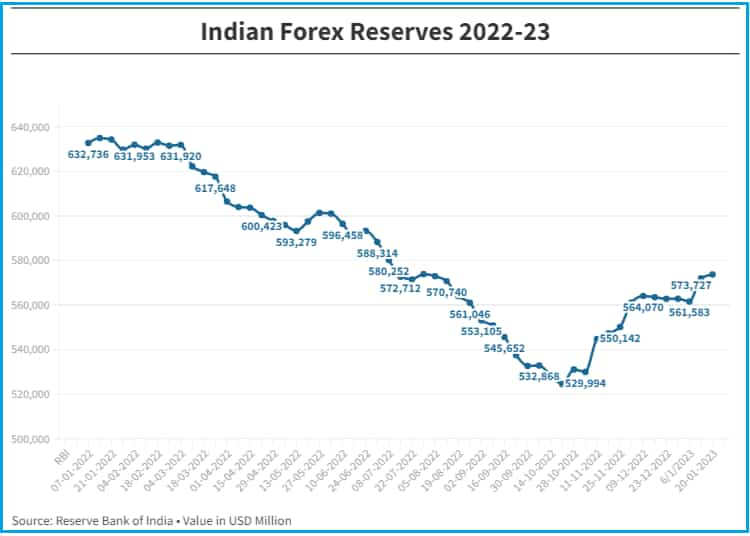India’s foreign exchange reserves, commonly known as forex reserves, play a crucial role in stabilizing the country’s economy and supporting its financial system. Managed by the Reserve Bank of India (RBI), these reserves are held in various currencies and assets, providing a buffer against economic shocks and ensuring smooth international trade.

Image: www.civilsdaily.com
Importance of India’s Forex Reserves
India’s forex reserves serve several critical functions:
-
International Trade Facilitation: These reserves enable India to finance imports and settle international trade obligations, ensuring the uninterrupted flow of goods and services.
-
Exchange Rate Stability: By actively managing forex reserves, the RBI can influence the value of the Indian rupee against other currencies, minimizing volatility and preventing sharp fluctuations.
-
Foreign Investments: Robust forex reserves boost India’s appeal as an attractive destination for foreign direct and portfolio investments, signaling the country’s financial resilience and ability to meet international obligations.
-
Economic Stability: In times of economic or financial distress, forex reserves provide a cushion to mitigate the impact of external shocks and maintain macroeconomic stability.
-
Sovereign Creditworthiness: High forex reserves enhance India’s sovereign creditworthiness, reflecting its ability to repay foreign debt and access international funding on favorable terms.
Composition and Management of Forex Reserves
As of March 2023, India’s forex reserves stand at approximately $577 billion. These reserves are primarily held in the following assets:
-
U.S. Treasury Bonds: Form the largest component, providing a safe and liquid investment with a stable return.
-
gold: Acts as a hedge against inflation and economic uncertainties, diversifying the portfolio.
-
Special Drawing Rights (SDRs): A reserve asset created by the International Monetary Fund (IMF), providing liquidity during international financial crises.
-
Foreign Exchange Currency: Includes currencies of other countries, such as the euro, yen, and pound sterling, used for intervention in the forex market.
The RBI manages forex reserves through various measures, including:
-
Open Market Operations: Buying and selling foreign currency in the forex market to regulate exchange rates.
-
Reserve Requirements: Adjusting the amount of foreign currency banks must hold as reserves.
-
Exchange Rate Intervention: Directly intervening in the market by buying or selling large amounts of foreign exchange to influence the rupee’s value.
India’s Forex Reserves: Recent Trends
Historically, India’s forex reserves have seen a steady upward trend, benefiting from foreign capital inflows, remittances, and an increase in exports. However, in recent times, certain factors have influenced the reserves:
-
COVID-19 Pandemic: The pandemic disrupted global trade and led to a decline in remittances, temporarily impacting forex reserves.
-
Russia-Ukraine Conflict: Ongoing geopolitical tensions have created economic uncertainties, affecting investor sentiment and potentially impacting forex reserves.
-
Reserve Management: The RBI’s efforts to diversify reserves and mitigate risks have contributed to the overall stability of forex reserves.

Image: www.zeebiz.com
Current Forex Holding Of India
Conclusion: The Significance of India’s Forex Reserves
India’s forex reserves are a vital aspect of the nation’s economic stability and financial security. By maintaining diverse and robust reserves, India can effectively manage challenges like global economic shocks, ensure smooth international trade, attract foreign investments, and enhance its sovereign creditworthiness. The strategic management of forex reserves by the RBI underscores India’s commitment to financial prudence and continued economic growth.






